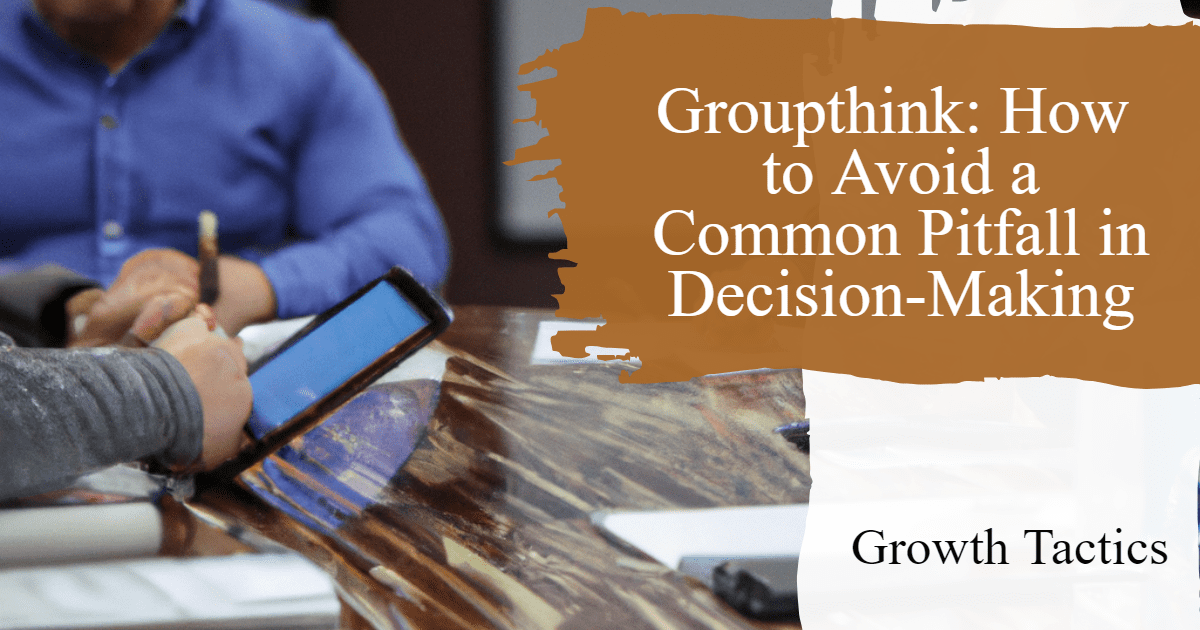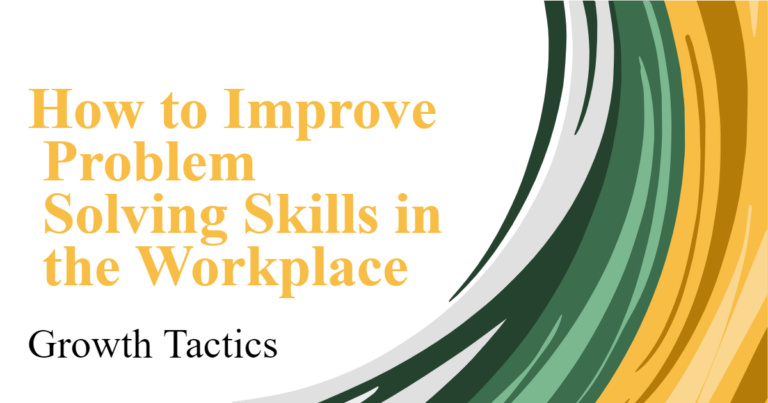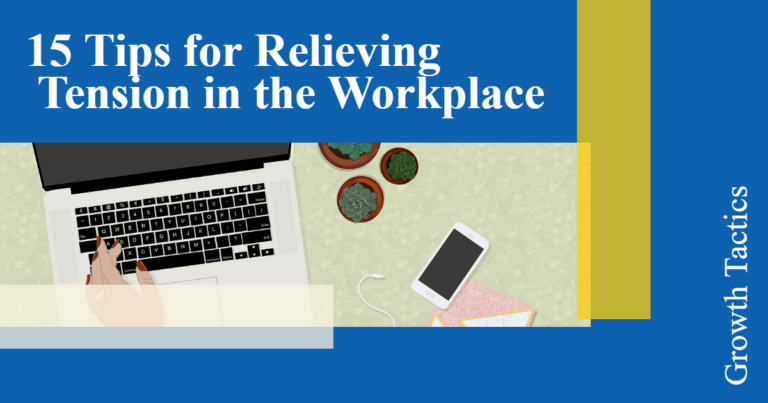Are you part of a group that consistently makes suboptimal decisions? Are you aware of the symptoms of groupthink and how to combat them? In this article, we will explore the concept of groupthink and how it affects our decision-making abilities. Understanding the phenomenon of groupthink is essential to making better decisions, whether you are in a professional setting or a social group.
Jump To Section
What is Groupthink?
Groupthink is a psychological phenomenon that occurs when a cohesive group of individuals makes decisions based on maintaining harmony within the group rather than evaluating the problem critically.
In other words, groupthink occurs when a group values consensus more than exploring diverse perspectives and alternatives. As a result, decisions made under the influence of groupthink may lead to suboptimal outcomes and consequences.
Irving Janis initially coined the term “groupthink” in 1972, describing the phenomenon as a mode of thinking in cohesive groups that strive for harmony and unanimity rather than critical analysis and diverse perspectives. Janis developed a groupthink theory, which identifies the characteristics of groups that are susceptible to groupthink.
Understanding Vulnerabilities: Who is Susceptible to Groupthink?
Groupthink can affect anyone, regardless of their intelligence or experience. We’re all susceptible to the allure of consensus and the desire for social acceptance. However, certain factors can increase our vulnerability to groupthink:
1. Close-knit teams or organizations:
When we’re part of a tightly-knit team or work in an organization with strong group dynamics, the bonds of camaraderie and cohesion can sometimes overshadow critical thinking. As we strive to maintain harmony within the group, we may suppress our own doubts or hesitate to challenge the prevailing opinion or individual members of the group.
2. High-stress situations:
In high-pressure situations like a crisis or time constraints, the need for swift decisions can intensify groupthink. The desire to reach a quick consensus and avoid conflict can lead to a rush in decision-making, bypassing thorough evaluation of alternatives or potential risks.
3. Authoritarian leadership:
Leaders who discourage dissenting opinions or discourage questioning of their authority can contribute to groupthink. When people feel that their views will be disregarded or met with negative consequences, they may hesitate to speak up, leading to a lack of diverse perspectives.
4. Homogeneous groups:
Groups that lack diversity in terms of background, experiences, or perspectives can be more prone to groupthink. When everyone shares similar viewpoints, critical evaluation and exploration of alternatives may be limited, leading to a narrow range of options being considered.
Recognizing the Signs: Symptoms of Groupthink
In this section, we’ll explore the symptoms of groupthink. It’s important to identify when groupthink is happening so we can prevent it. Recognizing these signs helps us make better decisions together.
Symptoms include:
- Illusion of invulnerability.
- Excessive optimism and risk-taking.
- Closed-mindedness.
- Self-censorship.
- Pressure for conformity.
Illusion of Invulnerability
Group members may feel overly confident and invincible when they’re part of a strong group. They may believe they can’t make mistakes or face negative outcomes. It’s like wearing rose-colored glasses, seeing only the good and ignoring the risks.
Excessive Optimism and Risk-Taking
When group cohesion is the main focus, members might take risks without thinking about the downsides. They get so caught up in the group spirit that they forget to be careful. It’s like being too excited and ignoring possible problems.
Closed-Mindedness
Groupthink can make members resist new ideas or different opinions. The fear of disrupting the group’s harmony can stop critical thinking and new solutions. It’s like wearing blinders, only seeing what’s right in front and ignoring other options.
Self-Censorship
Members might hold back their true thoughts, fearing rejection or isolation. This self-censorship stops independent thinking and the sharing of different views. It’s like biting your tongue, staying quiet, and just going with the flow.
Pressure for Conformity
Group dynamics can pressure individuals to agree with the majority. Those who disagree may stay silent to keep the peace, leading to less diverse decisions. It’s like feeling peer pressure, pushing you to follow the crowd instead of speaking up.
By knowing these symptoms, we can catch groupthink early. We can take steps to stop it and promote a more open, inclusive, and critical-thinking environment. This awareness helps us make better decisions together.
How Does Groupthink Affect Decision-making?
In cohesive groups, members may be more likely to engage in groupthink and make poor decisions. Group members may feel pressured to conform, and the persuasive group leader may suppress dissenting opinions.
This dynamic can lead to a false sense of unanimity, where group members may not express their doubts about a decision and instead support the group consensus.
Examples of Groupthink: Learning from Past Mistakes
Let’s dive into some real-life examples of groupthink to better understand how it can affect decision-making and why it’s important to be aware of its presence. Examining these examples will help us identify the signs of groupthink and avoid falling into the same traps.
The Bay of Pigs Invasion
One of the most notable examples of groupthink occurred during the Bay of Pigs invasion in 1961. The advisors of US President John F. Kennedy fell victim to groupthink when they made assumptions about the Cuban population’s willingness to rise against Fidel Castro. Instead of critically evaluating the situation, they relied on the majority opinion within the group, which led to a disastrous outcome.
Challenger Space Shuttle Disaster
Another tragic example of groupthink is the Challenger space shuttle disaster in 1986. Engineers and managers at NASA were aware of potential issues with the shuttle’s O-rings, which could fail in cold weather conditions. However, due to pressure to meet launch schedules and maintain the positive image of the space program, the concerns raised by engineers were dismissed. The result was a catastrophic failure that cost the lives of all seven crew members.
Enron: A Corporate Collapse
The collapse of energy giant Enron in 2001 is another example of groupthink in action. Top executives within the company fostered a culture that discouraged dissenting opinions and promoted an “us versus them” mentality. This environment led to a lack of critical evaluation and a blind trust in the company’s leadership. The consequences were severe, with Enron ultimately filing for bankruptcy and being involved in one of the largest corporate scandals in history.
Avoiding Groupthink in our Lives
These examples demonstrate the dangers of groupthink and highlight the importance of being vigilant in our decision-making processes. By recognizing the symptoms of groupthink and promoting open discussion, diverse perspectives, and critical thinking, we can prevent falling into the same traps that these historical examples illustrate.
Remember, we can all learn from these past mistakes and strive to create environments that encourage independent thinking, questioning of assumptions, and consideration of alternative viewpoints. By doing so, we can improve our decision-making skills and achieve better outcomes, whether in personal or professional settings.
Nurturing Independent Thinking: Strategies to Prevent Groupthink
Now that we’ve identified the symptoms of groupthink, let’s explore some practical strategies to prevent it. By implementing these approaches, we can create an environment that fosters independent thinking, encourages diverse perspectives, and leads to better decision-making.
- Encourage open communication: Establish an atmosphere where every member feels comfortable expressing their thoughts, concerns, and ideas. Encourage active participation and create opportunities for everyone to contribute. By promoting open communication, we create a space where diverse perspectives can thrive.
- Embrace diverse viewpoints: Actively seek out and include individuals with diverse backgrounds, experiences, and expertise in decision-making groups. Having a mix of ages, genders, cultures, and disciplines can bring fresh perspectives and challenge group assumptions. Embracing diversity is like adding different colored threads to a tapestry, creating a vibrant and comprehensive picture.
- Assign a devil’s advocate: Designate someone to play the role of a devil’s advocate, whose purpose is to challenge the prevailing group opinion and stimulate critical thinking. This person can voice alternative viewpoints and offer constructive criticism, fostering a healthy culture of debate and reflection. It’s like having a friendly sparring partner who helps you refine your thinking.
- Promote critical thinking: Encourage group members to ask questions, challenge assumptions, and explore alternative solutions. Create a culture that values thoughtful analysis and evidence-based reasoning. By honing our critical thinking skills, we become better equipped to make informed and rational decisions as a group.
- Seek external input: Sometimes, seeking input from outside sources can provide valuable insights and break the echo chamber effect of groupthink. Consider involving subject matter experts, consultants, or conducting external research to gain a fresh perspective and challenge group assumptions.
- Encourage dissenting opinions: Actively seek out and encourage dissenting opinions and alternative viewpoints. Emphasize that constructive criticism and disagreement are not only welcomed but valued as essential components of robust decision-making. It’s like having different pieces of a puzzle, each contributing to the complete picture.
- Promote reflection and evaluation: After decisions are made, encourage the group to reflect on the process and outcomes. Engage in post-decision evaluations to learn from successes and failures. This reflection process can help identify areas where groupthink may have influenced the decision and provide valuable lessons for future decision-making endeavors.
By implementing these strategies, we can proactively combat groupthink and create decision-making environments that thrive on diverse perspectives, critical thinking, and open dialogue. Remember, it’s a journey of growth and learning, and by actively working together, we can make better decisions and achieve more fruitful outcomes.
What is Polarization?
Polarization occurs when a group’s decision-making leads to the adoption of more extreme positions. Polarization can become a result of groupthink, as group members may adopt more radical positions due to the persuasive influence of the majority. As a result, group decision-making can become biased and less effective.
The Positive Side of Groupthink: When It Can Lead to Success
While groupthink is widely considered a negative phenomenon, there are cases where it can lead to positive outcomes. Here are a few examples:
1. Creative brainstorming:
In a creative brainstorming session, groupthink can be a useful tool for generating a large quantity of ideas. By building on each other’s suggestions and creating a collective creative momentum, group members can quickly generate a large number of possibilities. The important part is not allowing members to get stuck on one idea.
2. Team building:
In certain team-building activities, groupthink can help to build camaraderie and foster a sense of teamwork. By working together towards a common goal, group members can build connections and a sense of trust, which can be beneficial for future collaborative efforts.
3. Swift action:
In time-critical situations, groupthink can help to facilitate quick decision-making. By quickly reaching a consensus, the group can take immediate action, which may be beneficial in emergency scenarios.
Conclusion
Groupthink is a psychological phenomenon that affects decision-making processes in cohesive groups. While group cohesion is essential for group performance, it can also lead to suboptimal outcomes when consensus becomes the dominant goal. By understanding the symptoms of groupthink, we can recognize when it occurs and take action to prevent it. Encouraging a culture of openness and diversity in groups can lead to better decisions and a more innovative approach to problem-solving.
Remember, to avoid groupthink, it is essential to invite diverse perspectives, engage in critical thinking, and foster open communication. By doing so, we can minimize the negative consequences of groupthink and make better decisions as a group.
Things to remember:
- Groupthink occurs when consensus becomes more essential than evaluating the problem critically.
- The symptoms of groupthink include an illusion of invulnerability, closed-mindedness, excessive optimism, and self-censorship.
- Decision-making groups should encourage diverse perspectives, promote critical thinking, and embrace a culture of transparency and accountability.
- Groupthink can lead to disastrous consequences and victims of groupthink.
- Finally, encouraging diversity and critical thinking can minimize the negative effects of groupthink and lead to better decision-making.








